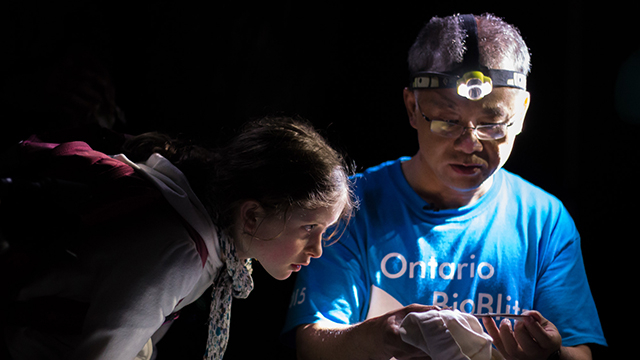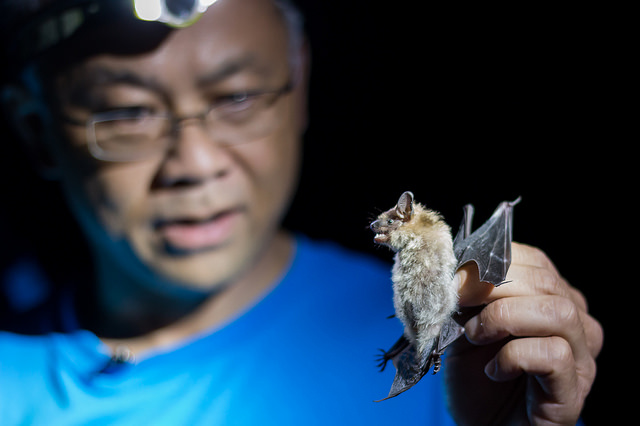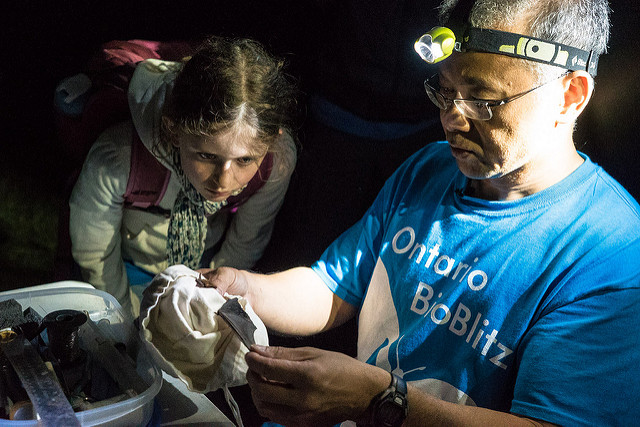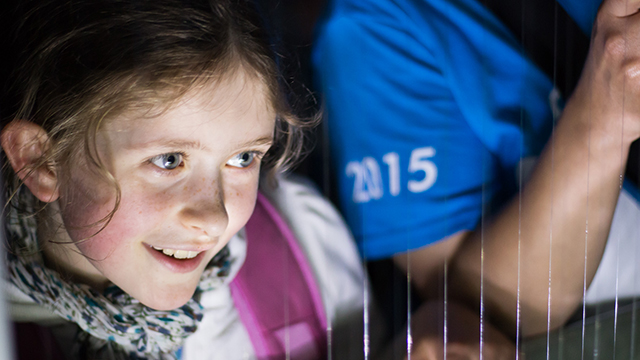Behind the Blitz: Eye to Eye with a Bat

Blog by Environmental Visual Communication alumnus / Ontario BioBlitz Communications Assistant Fatima Ali
Some adventurous people dream of being out in the field with scientists, documenting wildlife in the middle of the forest and discovering species. Sounds pretty exciting doesn’t it?
Well the Ontario Bioblitz allows you to do exactly that, through its Guided Blitz program. While the intensive 24-hour blitz is happening and hundreds of scientists are surveying and identifying species throughout the watershed, some of those experts take a couple hours away from the scientific blitz to lead Guided Blitz sessions. These allow less-experienced nature enthusiasts to learn some fieldwork techniques and identification skills. Depending on the session bioblitz participants have signed up for, they get a chance to explore a location the watershed looking for different specific groups of organisms (like mammals, plants, fish, etc) with scientists from the Royal Ontario Museum and other organizations such as this year's partners The Riverwood Conservancy, the Toronto Zoo, and Credit Valley Conservation.
For one special young lady named Saskia, her dream came true last year at the 2015 Ontario Bioblitz flagship event in the Don Watershed, when she participated in a guided blitz session about bats that was led by the ROM’s very own Assistant Curator of Mammalogy, Burton Lim along with fellow bat expert and Daily Planet co-host, Dan Riskin.

Saskia and the rest of her guided blitz team found at least 8 big brown bats (Eptesicus fuscus) during their night survey at Bakers Woods in 2015. The little brown bat is a species that is well known in North America and is one of the species that Ontarians would be most familiar with. They are not found in the far north of Canada, but their range extends south through the United States down through Mexico and Central America. Currently there are 150 bat species listed on the IUCN Red List of Threatened Species with conservation statuses as "vulnerable", "endangered", or "critically endangered". The big brown bat, however, has the conservation status as “least concern”.
But a relative of the big brown bat that shares a similar range in Ontario, the little brown bat, (Myotis lucifugus) is in trouble. At the end of 2014 in Canada, the species was given an emergency listing as "Endangered" according to the Species At Risk Act, along with two other species found in Canada, the Northern myotis (Myotis septentrionalis) and Tri-coloured bat (Perimyotis subflavus). Recent introductions - only about five years ago - of a fungal infection called white nose syndrome have decimated local populations of these three species. The big brown bats that were captured by Saskia and her group are less vulnerable to the effects of white nose syndrome, and remain off Canada's Species At Risk Act, but it is getting harder and harder to find the other three smaller bat species as the fungus continues to spread. But there is still hope for these little guys! Bat specialists and biologists say there just might be a cure that could be a step towards eradicating this infection for the struggling bat populations in Canada and the U.S. by using a common North American bacteria to treat it.

Even though there is vast amounts of information to read about the little brown bat on the internet, Burton, in a previous blog, mentioned the unfortunate reputation that bats in general have due to all the myths and misconceptions about them around the world (No, they will not get caught in your hair. Saskia agreed with us, mentioning that if it ever happens, it certainly isn't on purpose). This is why events like the Ontario Bioblitz are so important, because they provide the public with exposure to species and some of the details of their lives that people don’t usually get to encounter every day. According to Saskia, we should not be scared of the bats here in Canada. In fact she was surprised to see how "fragile and cute" they really are. Her most cherished moment from last year was being able to closely look into the eyes of a bat, before watching Burton release them back into their natural habitat.

Events like the Ontario BioBlitz aren't just outings for families. These types of outreach and citizen science initiatives help people to understand and interact with smaller, less familiar creatures that we have in our very own backyards, such as the little brown bat. So you see, you don’t have to travel somewhere exotic to explore nature when you have so much to learn right here in Ontario!
You can follow Ontario Bioblitz on twitter @OntarioBioBlitz or on Instagram @ontariobioblitz
*Please note that registration for this year’s Bioblitz 2016 at the Credit River Watershed is now closed, but that doesn’t mean you can’t join in on the fun! You and your family could still come to the Riverwood Conservancy, our base camp for this year in Mississauga to attend our very own NatureFest on Saturday, June 11th and get a feel of what a bioblitz is all about!
**Correction 2016-05-28 - the bats found by the guided blitz team was originally noted to be little brown bats (Myotis lucifugus) but were actually big brown bats (Eptesicus fuscus).
